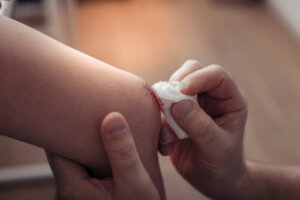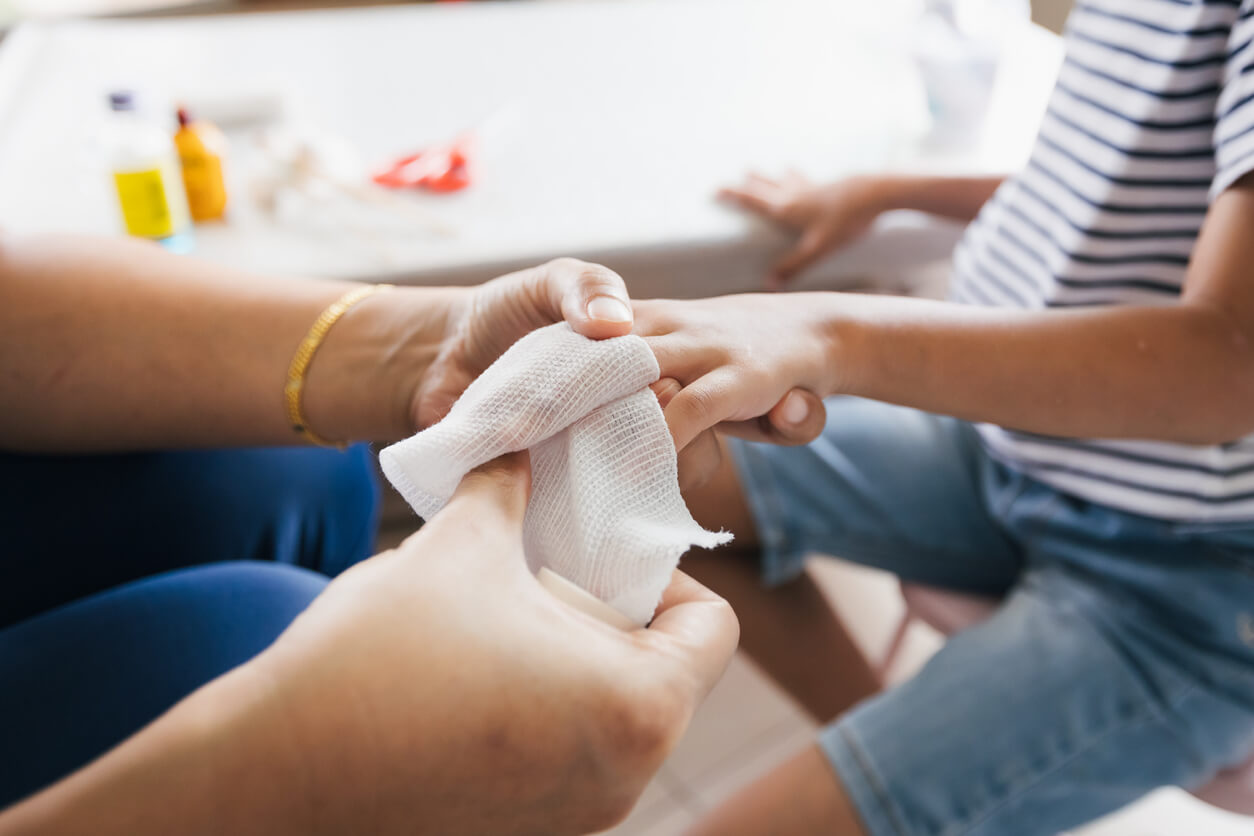Abscesses in Children: Symptoms, Causes and Treatments


Written and verified by the dermatologist Maria del Carmen Hernandez
Abscesses in children have increased significantly over the last decade and require prompt evaluation for treatment. However, management may vary depending on the site of care. Keep reading to learn what the causes, symptoms, and possible treatments are.
Causes of abscesses in children
A skin abscess is the accumulation of pus in the different dermal planes. Most often, they’re caused by a previous infection triggered by bacteria entering the skin through a scrape or cut. They can also be caused by an ingrown hair, an insect bite, or a puncture wound. Simultaneously, the body’s immune system kicks in and sends white blood cells to counteract the infection.
The most common bacteria found on the skin are Staphylococcus Aureus and group A Streptococcus, which don’t usually cause pathologies. However, when a lesion is evident on the skin surface, these bacteria can be opportunistic and trigger an infection. They often appear on hairy skin exposed to sweat or friction.
You may be interested in: 10 Home Remedies for Skin Fungus
Symptoms of abscesses in children
At first, abscesses are raised, red, firm, and painful to the touch. In addition, the surrounding area may feel warm or be seen with a lot of pus collection. In general, they’re very painful until drained and may be accompanied by fever or general malaise. For this reason, a pain reliever may be beneficial.
In addition, abscesses can develop on the surface of the skin, in deeper planes, or even in a tooth. Fortunately, most abscesses are harmless and may disappear without treatment.
When to seek emergency medical attention?
Abscesses in children should be managed by medical personnel at the first instance. However, if any of the following signs or symptoms are present, the specialist should be consulted urgently:
- The abscess increases in size
- High fever
- The abscess reappears
- Worsening edema and erythema
- The pain worsens or doesn’t disappear

Therapeutic options for abscesses in children
Therapeutic management of abscesses in children can be surgical or by antibiotics and hygienic care measures. In turn, over-the-counter medications and creams may be all that’s required to help speed the healing process in a mild case.
Surgical treatment
There are multiple treatments for skin abscesses in children. In general, those that are large require surgical intervention to drain the purulent contents. To do this, an incision is made over the pus-filled lesion. The cut usually heals on its own; however, some may require stitches.
Oral antibiotics
In most cases, antibiotics in tablet or syrup form are prescribed to help kill the germs. Therefore, you must ensure that the child follows the complete pharmacological treatment, even if improvement begins to be seen before it’s completed. The administration of antibiotics helps to reduce inflammation and pain in the affected region.
Care and hygiene measures
The doctor will give the necessary indications to put into practice. Some of them are the following:
- Keep the affected area covered with a non-stick bandage.
- Prevent the infection from spreading. To do this, wash hands regularly and wash bedding and clothing with hot water.
- Use clean clothes every day.
- Don’t allow the child to sit in the bath water, but take a shower to avoid spreading the infection.
- Avoid squeezing, touching, or popping the abscess.
Read also: How to Treat Infected Wounds in Children

Complications of skin abscesses
There are few occasions in which abscesses evolve unfavorably and cause serious complications. However, some of them include the following:
- Spread of infection, potentially to the spinal cord or brain
- Sepsis
- Endocarditis, which is an infection of the inner lining of the heart
- The generation of new abscesses
- Gangrene, the death of tissue in the area surrounding the abscess
- Osteomyelitis (acute bone infection)
Another possible complication is methicillin-resistant Staphylococcus aureus (MRSA), which is a strain of bacteria that resists the drugs commonly used to treat skin abscesses. Moreover, while alternative antibiotics are available, they’re not always effective.
Preventing abscesses in children
Abscesses in children are seen quite frequently, as they’re less likely to wash well and take proper care of wounds or cuts.
In conclusion, skin infections are one of the most recurrent pediatric consultations. Therefore, it’s important to teach children to wash their hands correctly and regularly as a method of care and prevention.
All cited sources were thoroughly reviewed by our team to ensure their quality, reliability, currency, and validity. The bibliography of this article was considered reliable and of academic or scientific accuracy.
- Sladden MJ, Johnston GA. Common skin infections in children. BMJ. 2004 Jul 10;329(7457):95-9. doi: 10.1136/bmj.329.7457.95. PMID: 15242915; PMCID: PMC449820.
- Rayala BZ, Morrell DS. Common Skin Conditions in Children: Skin Infections. FP Essent. 2017 Feb;453:26-32. PMID: 28196318.
- Galli L, Venturini E, Bassi A, Gattinara GC, Chiappini E, Defilippi C, Diociaiuti A, Esposito S, Garazzino S, Giannattasio A, Krzysztofiak A, Latorre S, Lo Vecchio A, Marchisio P, Montagnani C, Nicolini G, Novelli A, Rossolini GM, Tersigni C, Villani A, El Hachem M, Neri I; Italian Pediatric Infectious Diseases Society; Italian Pediatric Dermatology Society. Common Community-acquired Bacterial Skin and Soft-tissue Infections in Children: an Intersociety Consensus on Impetigo, Abscess, and Cellulitis Treatment. Clin Ther. 2019 Mar;41(3):532-551.e17. doi: 10.1016/j.clinthera.2019.01.010. Epub 2019 Feb 15. PMID: 30777258.
-
Taylor TA, Unakal CG. Staphylococcus Aureus. [Updated 2021 Jul 21]. In: StatPearls [Internet]. Treasure Island (FL): StatPearls Publishing; 2021 Jan-. Available from: https://www.ncbi.nlm.nih.gov/books/NBK441868/
This text is provided for informational purposes only and does not replace consultation with a professional. If in doubt, consult your specialist.








